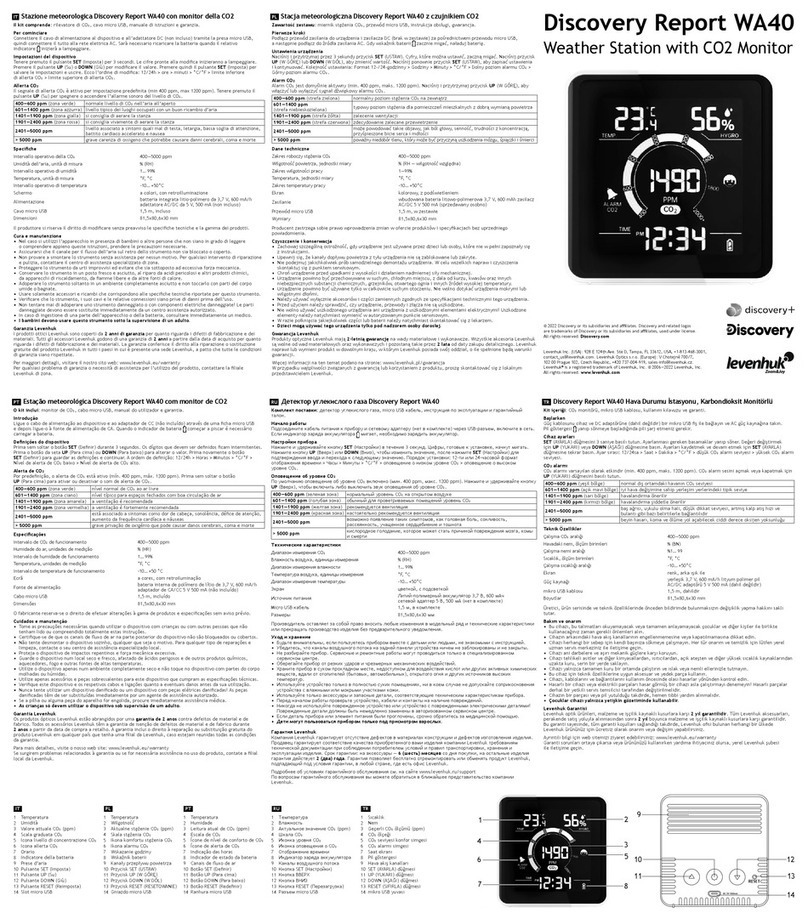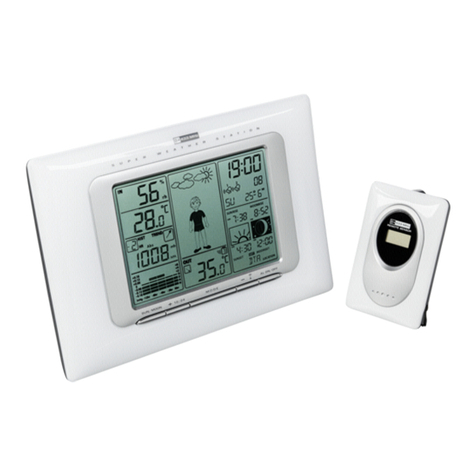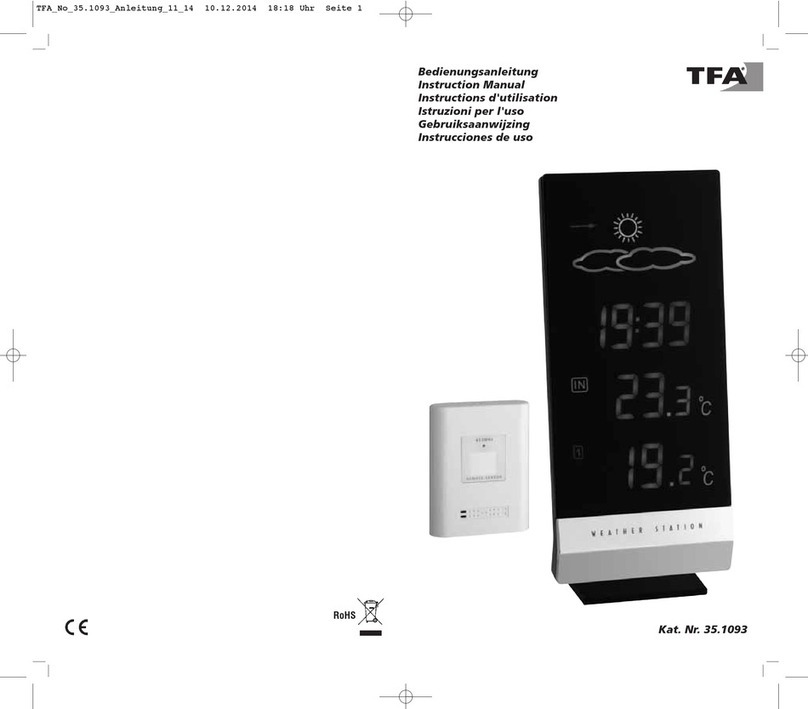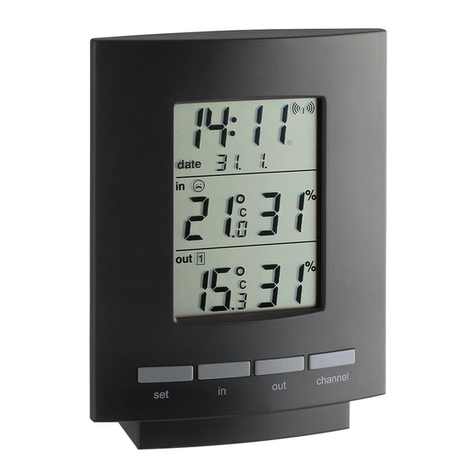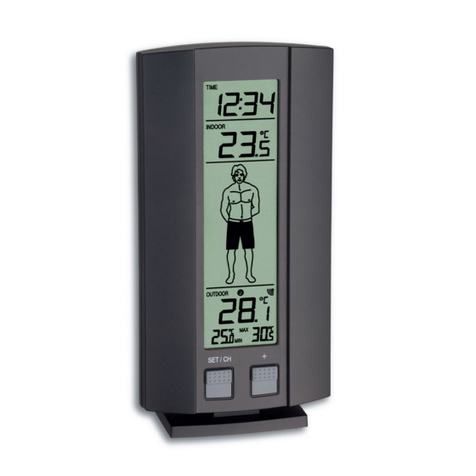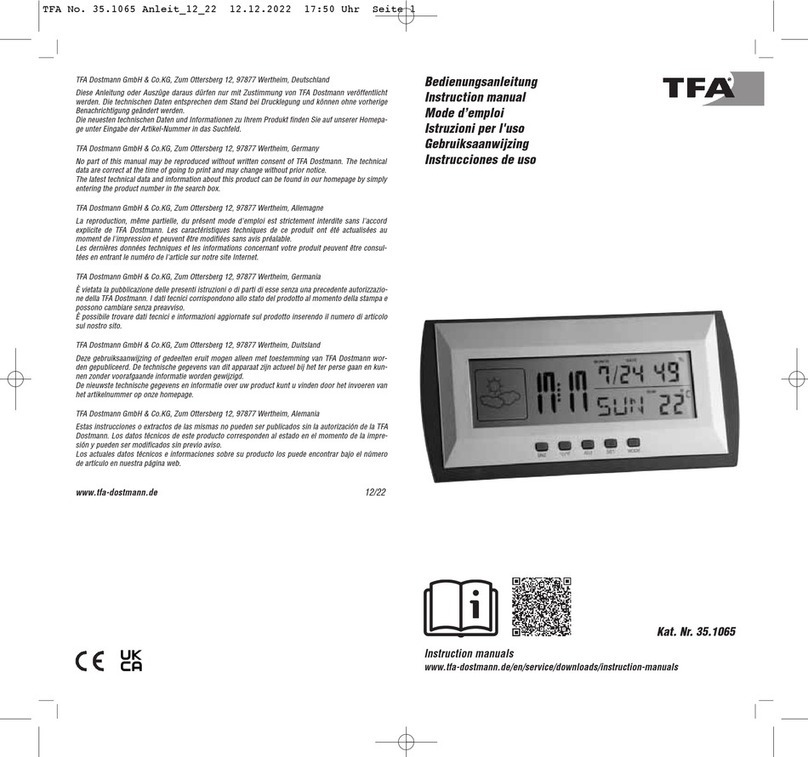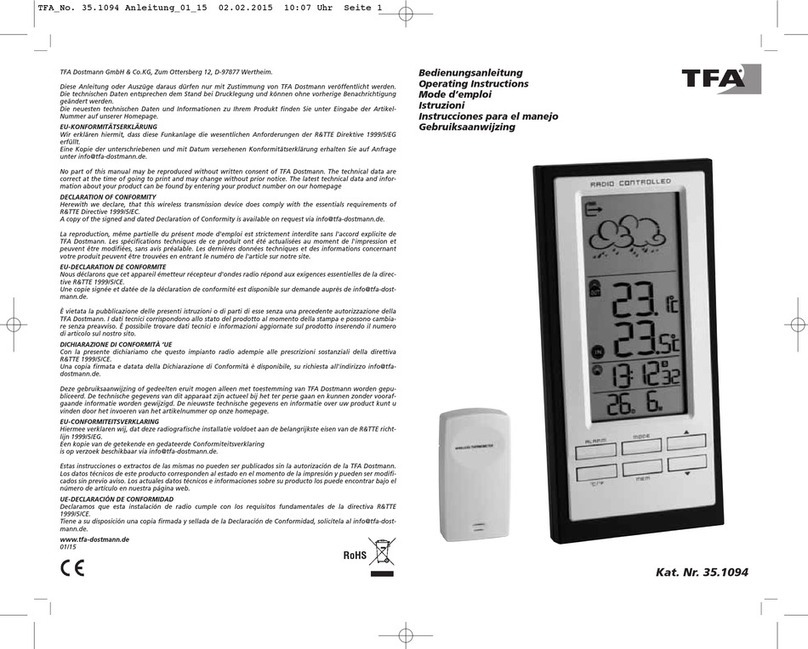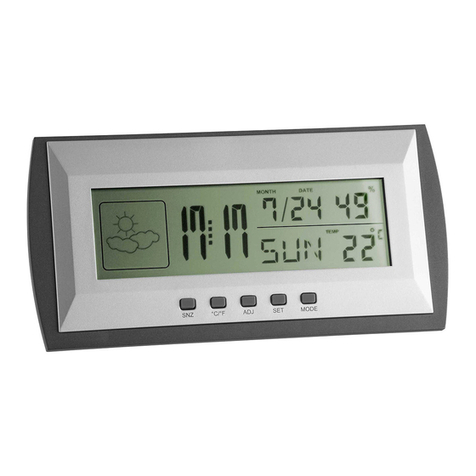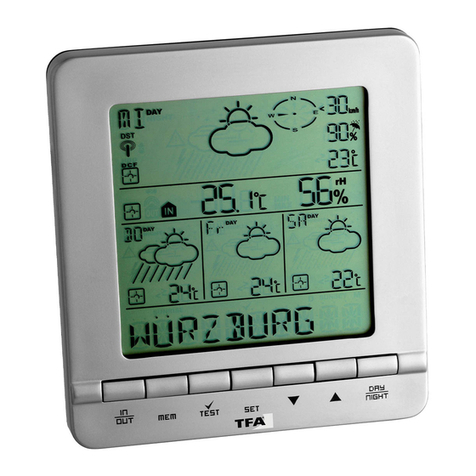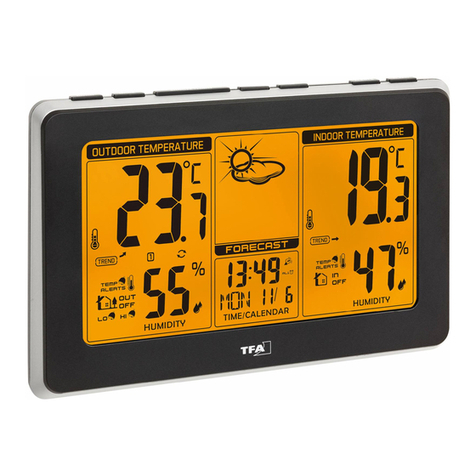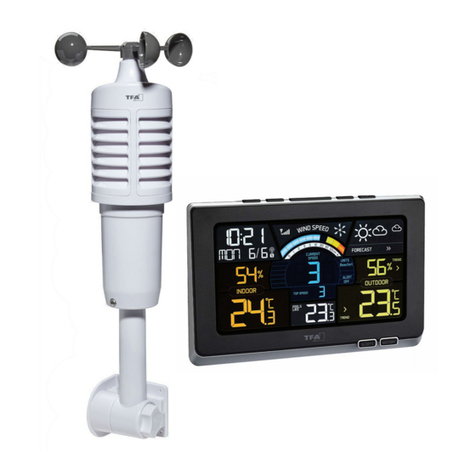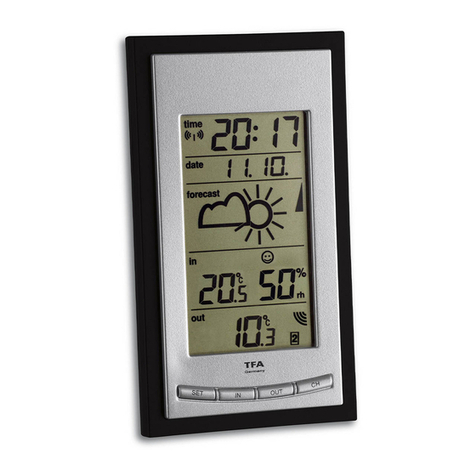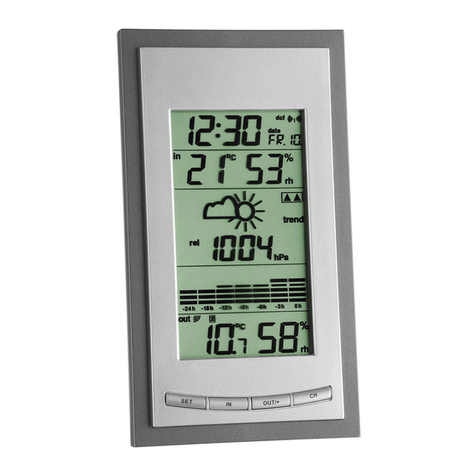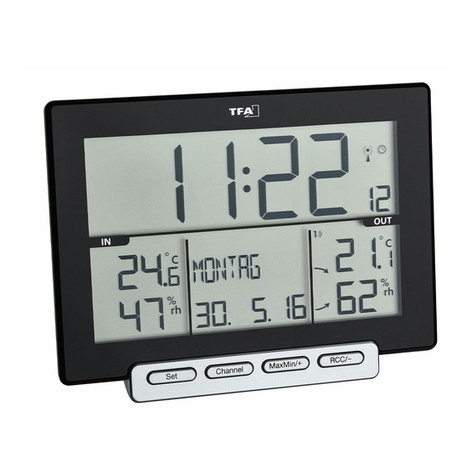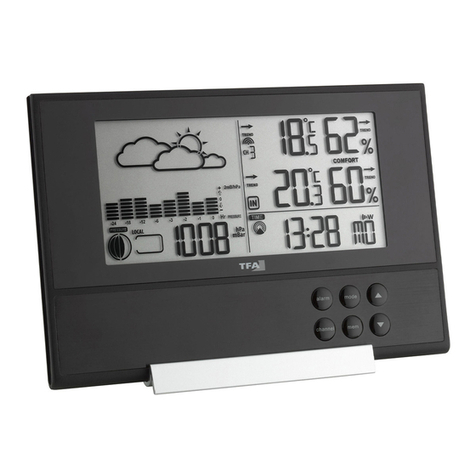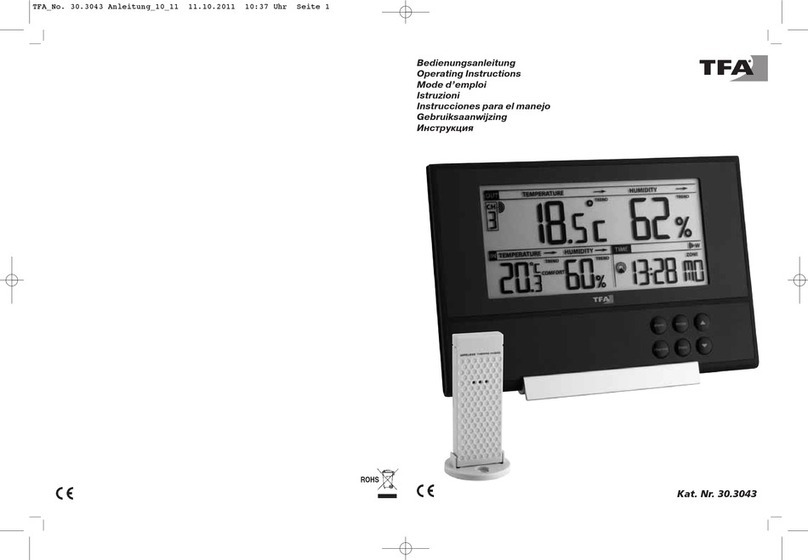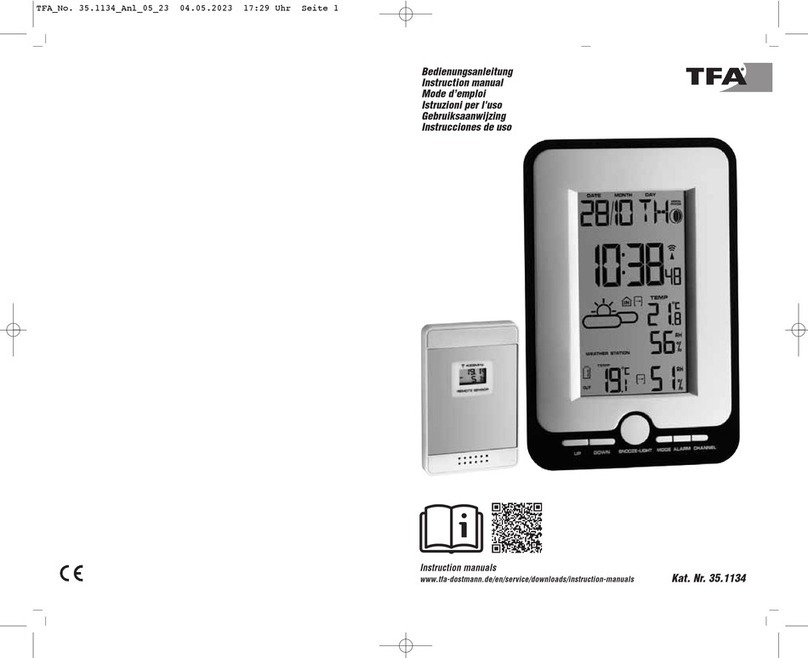1110
METEO SENS - Funk-Wetterstation
METEO SENS - Funk-Wetterstation
• Nachts sind die atmosphärischen Störungen meist geringer und ein Empfang ist in den meisten Fäl-
len möglich. Ein einziger Empfang pro Tag genügt, um die Genauigkeit zu gewährleisten und Abwei-
chungen unter 1 Sekunde zu halten.
7. Bedienung
• Halten Sie die MAXMIN/+ oder RCC/- Taste im Einstellmodus gedrückt, gelangen Sie in den Schnell-
lauf.
• Das Gerät verlässt automatisch den Einstellmodus, wenn länger als 20 Sekunden keine Taste
gedrückt wird.
7.1 Manuelle Einstellungen
• Halten Sie die SET Taste im Normalmodus gedrückt.
• dCF erscheint im Display und on (Voreinstellung) blinkt.
• Sie können mit der MAXMIN/+ oder RCC/- Taste den Empfang für das DCF Funksignal für die Uhrzeit
deaktivieren (OFF) oder aktivieren (on).
• Bei deaktiviertem Empfang müssen Sie die Uhrzeit manuell einstellen. Es erscheint keine Zeitzone.
• Drücken Sie die SET Taste noch einmal und Sie können nun nacheinander die Zeitzone (0 - Vorein-
stellung), die 12- oder 24 Stunden-Anzeige (24Hr - Voreinstellung), die Stunden, die Minuten, das
Jahr, den Monat, den Tag, den Luftdruck (Voreinstellung: 1013hpa) und die Temperaturanzeige (°C -
Voreinstellung) ansteuern und mit der MAXMIN/+ oder RCC/- Taste einstellen.
• Bestätigen Sie mit der SET Taste.
• Bei erfolgreichem Empfang des DCF-Funksignals und bei aktiviertem Empfang wird die manuell ein-
gestellte Zeit überschrieben.
• Falls die Funkuhr kein DCF-Funksignal empfangen kann (z.B. wegen Störungen, Übertragungsdi-
stanz, etc.), kann die Zeit manuell eingestellt werden. Das DCF-Empfangszeichen verschwindet und
die Uhr arbeitet dann wie eine normale Quarz-Uhr (siehe Manuelle Einstellungen).
• Es gibt drei verschiedene Empfangssymbole:
Funkwellen blinken – Empfang aktiv
Funkwellen bleiben stehen – Empfang erfolgreich
kein Symbol – kein Empfang/Uhrzeit manuell eingestellt/Empfang ausgeschaltet
6.3.1 Hinweis zum Empfang der Funkzeit
Die Zeitübertragung erfolgt von einer Cäsium Atom-Funkuhr, die von der Physikalisch Technischen
Bundesanstalt in Braunschweig betrieben wird. Die Abweichung beträgt weniger als 1 Sekunde in einer
Million Jahren. Die Zeit ist kodiert und wird von Mainflingen in der Nähe von Frankfurt am Main durch
ein DCF-77 (77.5 kHz) Frequenzsignal übertragen mit einer Reichweite von ca. 1.500 km. Ihre Funkuhr
empfängt das Signal, wandelt es um und zeigt immer die exakte Zeit an. Auch die Umstellung von
Sommer- und Winterzeit erfolgt automatisch. Während der Sommerzeit erscheint das Sommerzeit-
Symbol im Display. Der Empfang hängt hauptsächlich von der geographischen Lage ab. Im Normalfall
sollten innerhalb des Radius von 1.500 km ausgehend von Frankfurt bei der Übertragung keine Proble-
me auftauchen.
Bitte beachten Sie folgende Hinweise:
• Es wird empfohlen, einen Abstand von mindestens 1,5 – 2 Metern zu eventuell störenden Geräten
wie Computerbildschirmen und Fernsehgeräten einzuhalten.
• In Stahlbetonbauten (Kellern, Aufbauten) ist das empfangene Signal natürlicherweise schwächer. In
Extremfällen wird empfohlen, das Gerät in Fensternähe zu platzieren und/oder durch Drehen das
Funksignal besser zu empfangen.
TFA_No. 35.1139_Anleitung 11.04.2017 15:15 Uhr Seite 6

